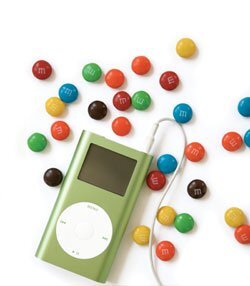Forget writing on hands or whispering answers. Many students have traded the cheating techniques of yesteryear for more sophisticated methods.
Below are a few of the more innovative ways students have tried to gain an unfair advantage. You have to wonder what these students would accomplish if they were to apply such creativity and determination to a more constructive endeavor—like studying.

Water bottles: Students write answers on the inside of a bottle’s label, then reattach it, so the writing is visible through the water during the test.
Cell phones: In addition to text-messaging answers to one another, students take pictures of the test, then beam the images to friends. Others photograph their notes ahead of time.
M&M’s: After assigning each candy color a multiple-choice letter, students line up M&M’s on their desks in the order of the answers.
MP3 players: Before the test, students record answers and then listen to them through earphones during exams.
Invisible-ink pens: Kids write notes or formulas on a sheet of paper in invisible ink, then use the pen’s ultraviolet flashlight during the test to reveal what they’ve written.
Personal digital assistants: Students send information to one another through their PDAs and use the devices to store formulas and notes.



